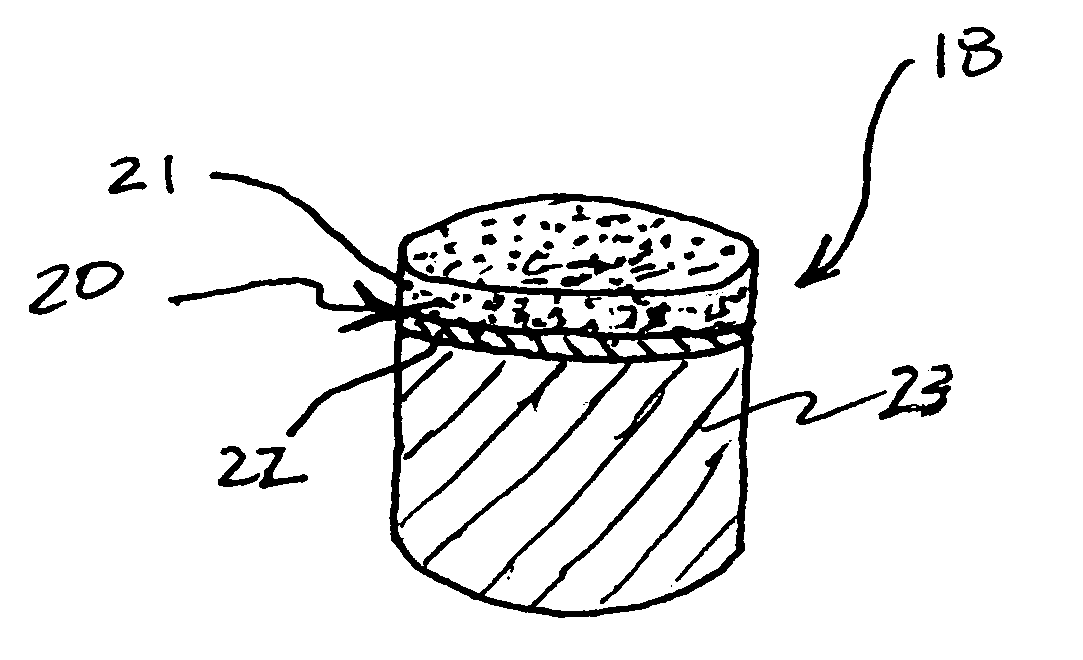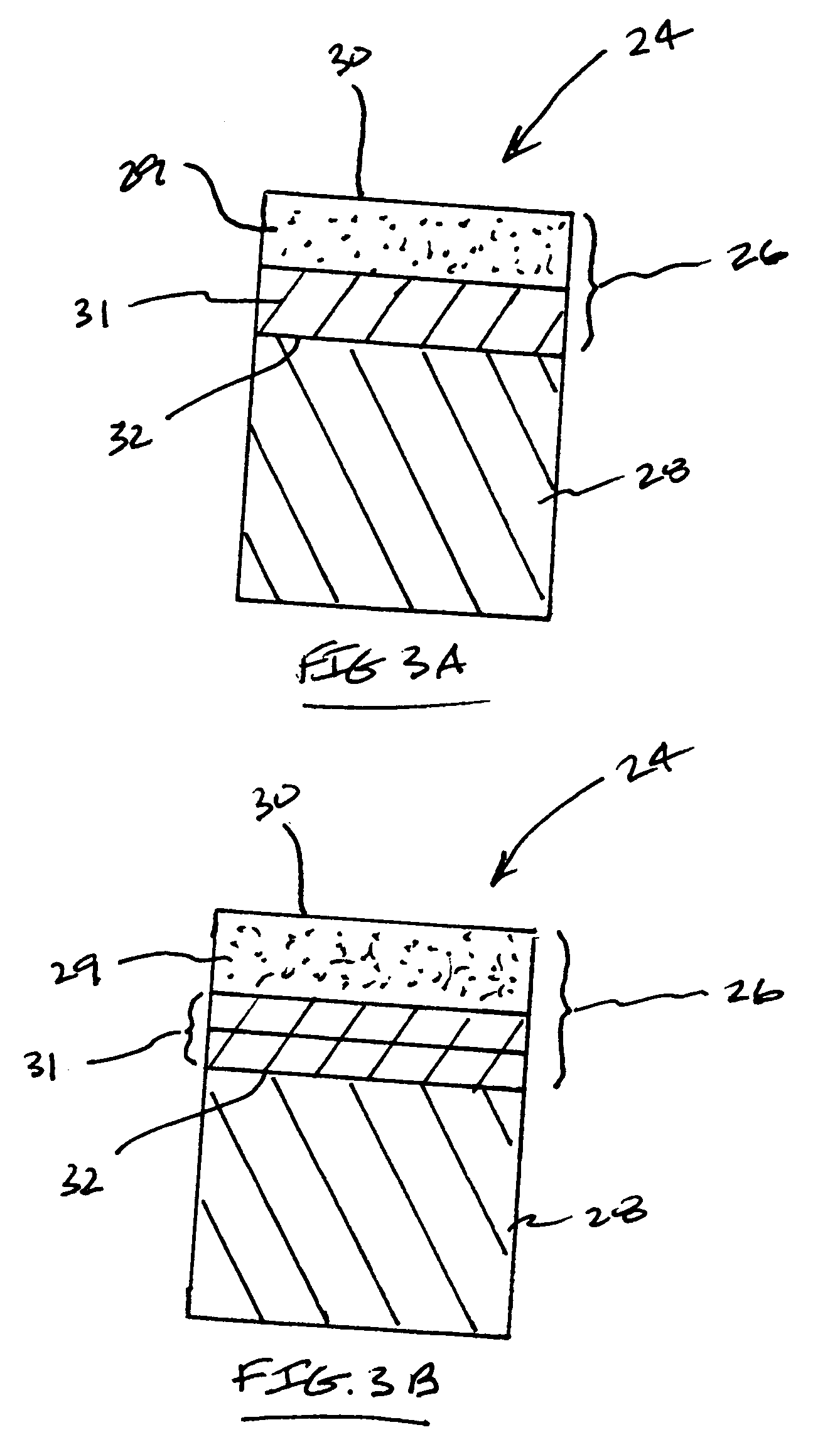Thermally stable diamond bonded materials and compacts
a diamond-to-diamond bonding and compact technology, applied in the field of diamond-to-diamond bonding, can solve the problems of thermal degradation, cracks and chips in the pcd structure, and ruptures in the diamond-to-diamond bonding, so as to facilitate the attachment of the compact, improve the hardness/toughness and impact strength, and improve the thermal stability
- Summary
- Abstract
- Description
- Claims
- Application Information
AI Technical Summary
Benefits of technology
Problems solved by technology
Method used
Image
Examples
example 1
Thermally Stable Diamond Bonded Compact
first embodiment
[0079] Synthetic diamond powders having an average grain size of approximately 2-50 micrometers were mixed together for a period of approximately 2-6 hours by ball milling. The resulting mixture was cleaned by heating to a temperature in excess of 850° C. under vacuum. The mixture was loaded into a refractory metal container with a first stage infiltrant in the form of a silicon metal disk adjacent to a predetermined working or cutting surface of the resulting diamond bonded body. A WC—Co substrate was positioned adjacent an opposite surface of the resulting diamond bonded body. The container was surrounded by pressed salt (NaCl) and this arrangement was placed within a graphite heating element. This graphite heating element containing the pressed salt and the diamond powder and substrate encapsulated in the refractory container was then loaded in a vessel made of a high-temperature / high-pressure self-sealing powdered ceramic material formed by cold pressing into a suitable shape.
[...
example 2
Thermally Stable Diamond Bonded Compact
PUM
| Property | Measurement | Unit |
|---|---|---|
| Fraction | aaaaa | aaaaa |
| Mass | aaaaa | aaaaa |
| Volume | aaaaa | aaaaa |
Abstract
Description
Claims
Application Information
 Login to View More
Login to View More - R&D
- Intellectual Property
- Life Sciences
- Materials
- Tech Scout
- Unparalleled Data Quality
- Higher Quality Content
- 60% Fewer Hallucinations
Browse by: Latest US Patents, China's latest patents, Technical Efficacy Thesaurus, Application Domain, Technology Topic, Popular Technical Reports.
© 2025 PatSnap. All rights reserved.Legal|Privacy policy|Modern Slavery Act Transparency Statement|Sitemap|About US| Contact US: help@patsnap.com



